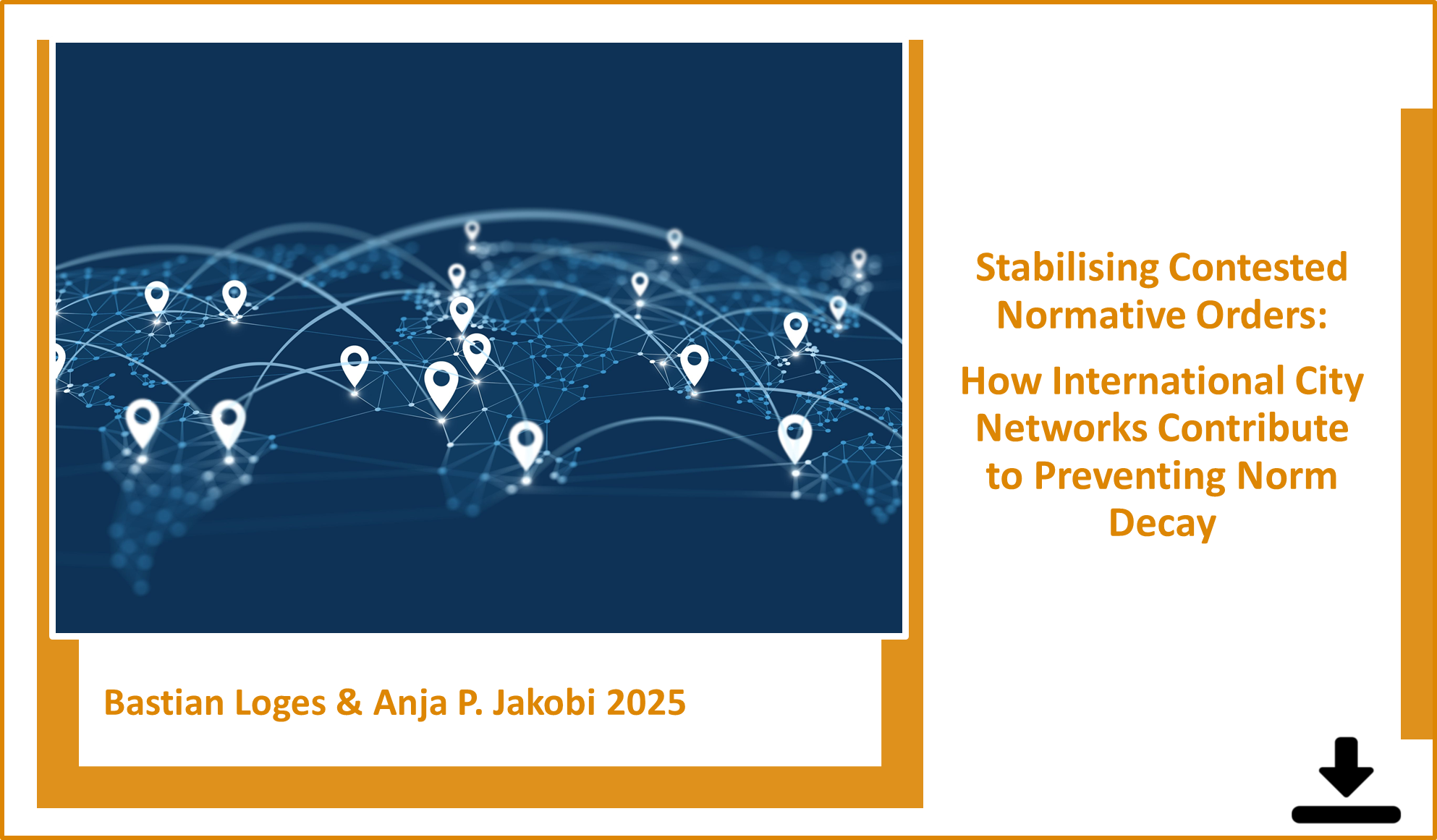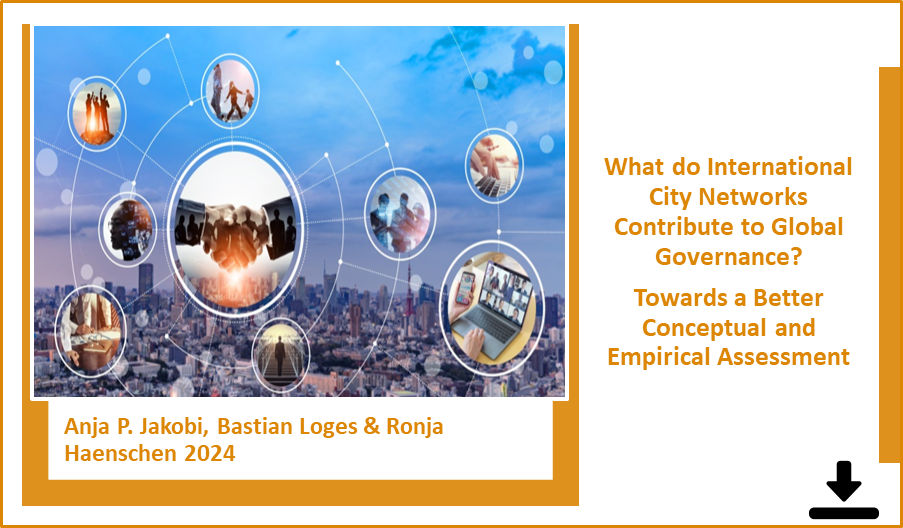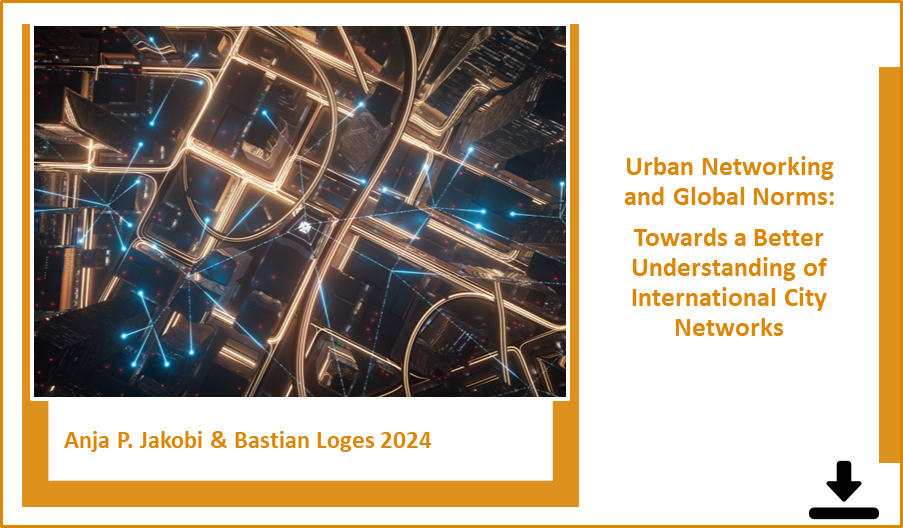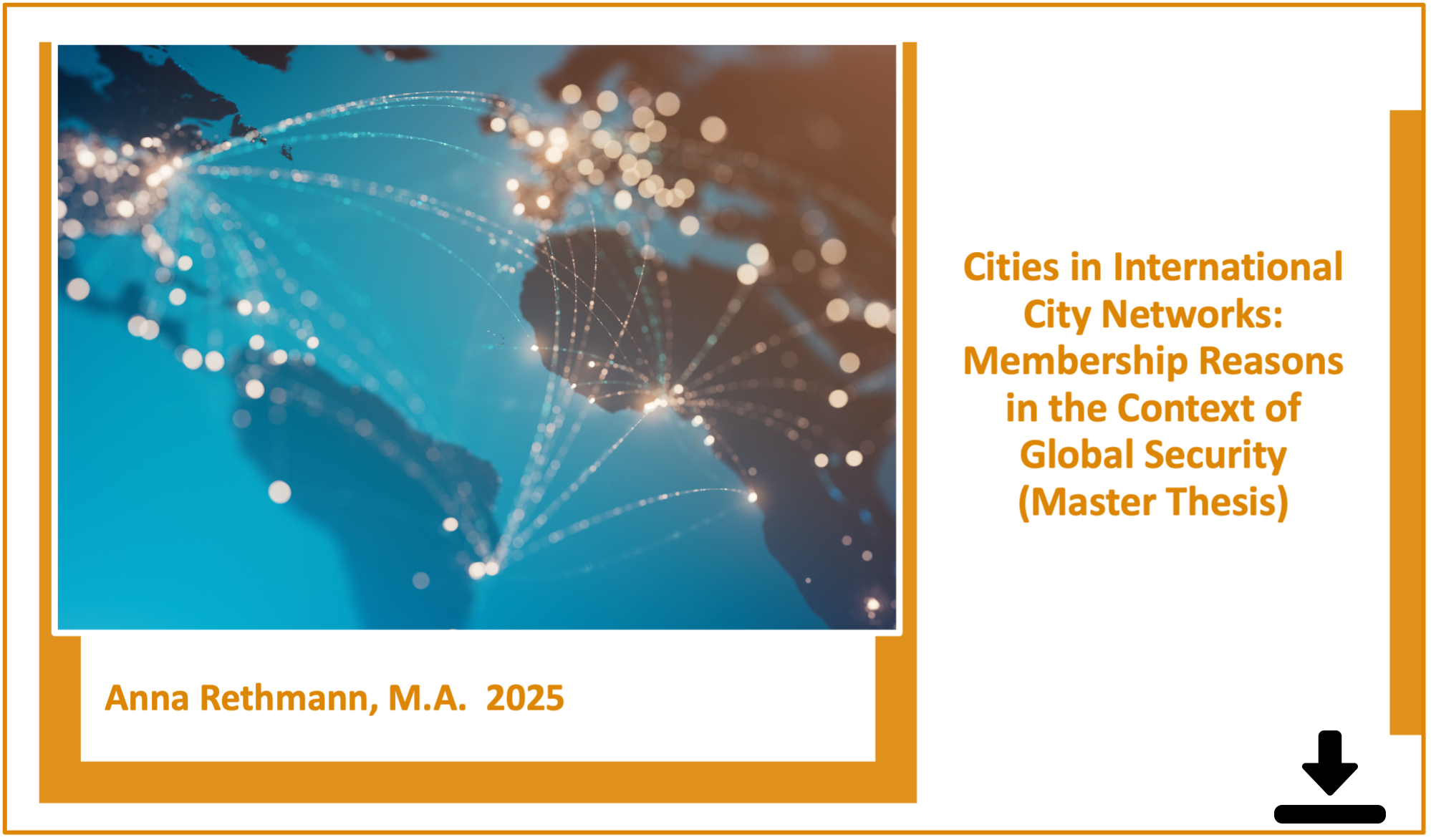City Networks in Global Norm Dynamics. How do Network Structures Influence the Activities of International City Networks?
URBANORMS analyzes international city networks in global politics. These networks represent a new type of urban agency, whose reach and organizational level substantially exceed established forms of city partnerships. As with other actors, their network structure enables new, intensified forms of interaction and, potentially, new forms of influence in world politics.
Against this background, this project examines the research question how network structures influence the activities of international city networks in global norm dynamics.
Global norm dynamics involve a range of transnational and local processes that influence the initiation, diffusion, contestation, and weakening of norms. Despite the growing emphasis on local actors in International Relations research on norms, the variance of activities shown by city networks as well as the relation to their network structure remain under-researched.
As a consequence, this project systematically examines the variance of activities linked to global norm dynamics (as dependent variable) and explains this variance through network structures (as independent variable), referring to central concepts of IR research and social network analysis like power, intensity of cooperation or collective identity.
The project aims at five interrelated objectives:
- Assessing the activities of city networks in global norm dynamics systematically and with reference to different policy fields
- Explaining these activities through network structures of city networks
- Advancing capabilities to account for the prerequisites of agency through a comparative network analysis using different methods of data gathering and analysis
- Compiling a data base on activities of city networks that can also be used for further research on the subject
- Answering the relevant question under which conditions local actors contribute to global norms
The project is based on a y-centered research design, including a triangulation of methods to generate and analyze data. In a first step, it brings together existent explanations of activities linked to norm dynamics and empirically examines a broad base of city networks and their activities related to norm dynamics. Further steps are dedicated to examining four city networks and explain their activities linked to norms on security, human rights, health, and digitalization. Methods include interviews, survey research, document and social network analysis.
See below









